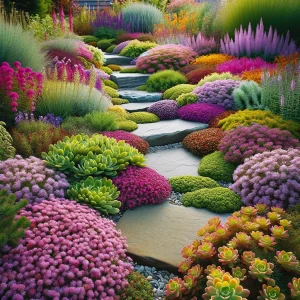As spring approaches, lawn maintenance can often seem daunting. While aesthetically pleasing, traditional grass lawns demand a significant amount of water, fertilizer, and time. However, environmentally conscious and practical solutions exist that not only ease the burden of lawn care but also contribute positively to our planet. This blog introduces gardening enthusiasts to sustainable, attractive alternatives to the traditional grass lawn, offering a guide to transitioning with an emphasis on the benefits for both the environment and the homeowner.

The Benefits of Reducing Traditional Lawn Areas
Traditional lawns require immense water and chemical inputs to maintain their lush, green appearance. The environmental cost of this maintenance is high, leading to water scarcity issues and chemical runoff that harms local ecosystems. Transitioning to lawn alternatives such as clover, moss, or native ground covers can significantly reduce these impacts. For instance, clover lawns are drought-resistant and fix nitrogen in the soil, reducing the need for chemical fertilizers. Experts and studies have highlighted how such alternatives can decrease water usage by up to 50% and eliminate the need for chemicals.

Sustainable Alternatives to Grass Lawns
Clover Lawns
Clover is a robust, low-maintenance alternative that remains green throughout the summer and requires minimal mowing. It’s particularly beneficial for pollinators and enhances local biodiversity.
Moss Lawns
Ideal for shady, moist areas where grass struggles to grow, moss provides a lush, green carpet without the need for mowing or aerating. It’s incredibly low-maintenance and thrives in acidic soil conditions.
Native Ground Covers
Options like creeping thyme and sedum adapt well to local conditions. They require less water and offer beautiful flowers and textures, perfect for creating a garden tapestry of colors and shapes.
Ornamental Grasses
For those seeking a more structured look, ornamental grasses offer height, texture, and movement. They are drought-tolerant and provide visual interest throughout the year.

Step-by-Step Guide to Transitioning
- Assessment: Evaluate your lawn area, considering sunlight exposure, soil type, and moisture levels.
- Preparation: Remove existing grass and amend the soil if necessary to suit the needs of your chosen alternative.
- Selection: Choose the correct alternative based on your garden’s specific conditions. For sunny areas, consider sedum or ornamental grasses; moss or clover might be better suited for shaded areas.
- Installation: Follow specific planting or seeding instructions for your chosen alternative. Ensure proper spacing and depth for optimal growth.
- Maintenance Tips: Each alternative has unique care instructions. For example, clover might require occasional mowing to keep it looking tidy, while moss requires little more than keeping the area free of debris.
Avoid common mistakes such as improper soil preparation or choosing a ground cover unsuited to your climate. Consulting with a local gardening expert or extension service can provide valuable insights tailored to your situation.

Environmental and Practical Considerations
Transitioning to a lawn alternative is a personal aesthetic choice and a contribution to a more sustainable and biodiverse local ecosystem. These alternatives require less water and no chemicals, reducing your environmental footprint and promoting a healthier, more resilient garden ecosystem.
Initial investments in transitioning may include the cost of removing existing grass, soil amendments, and purchasing seeds or plants. However, the long-term savings in water, fertilizers, and maintenance time far outweigh these initial costs. Moreover, these alternatives provide crucial habitats for pollinators and beneficial insects, enhancing local biodiversity and contributing to the health of our planet.
Embracing lawn alternatives offers a practical solution for gardening enthusiasts looking for low-maintenance, environmentally friendly options. As we approach spring, consider transitioning to a more sustainable lawn alternative. Not only will you contribute to a healthier planet, but you’ll also enjoy the beauty and diversity these alternatives bring to your garden. Start planning your transition today, and look forward to a spring filled with beauty, biodiversity, and ease of care.